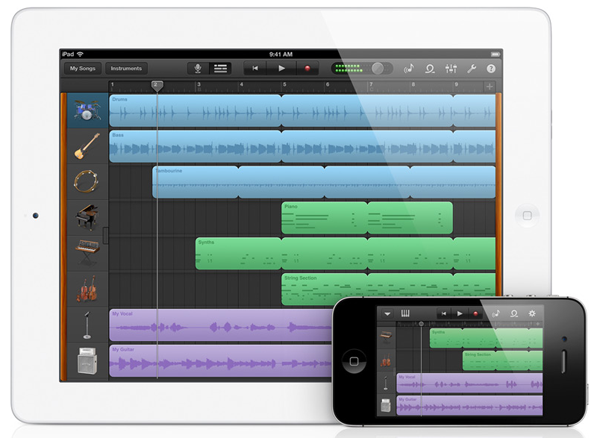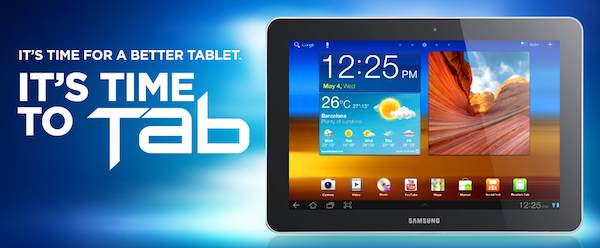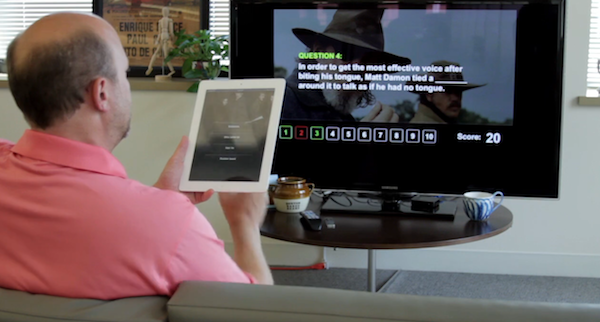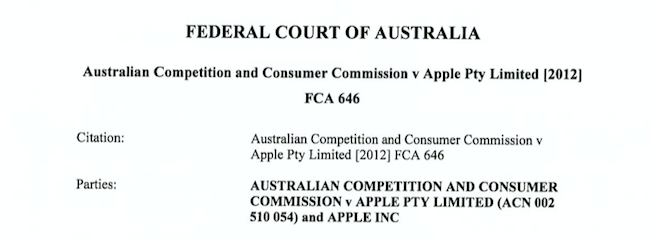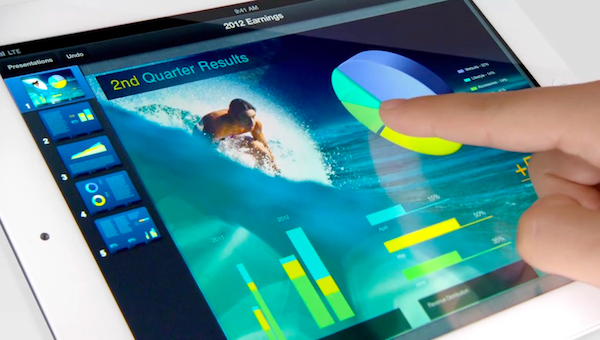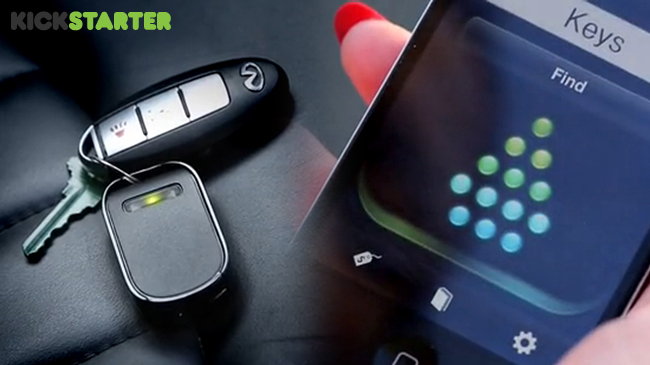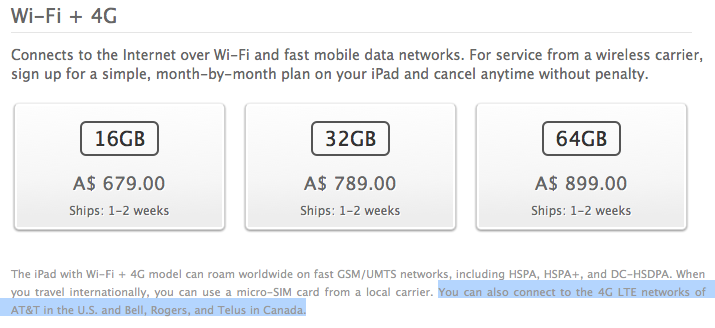Rumors of a 7” iPad have been rampant for months, but this week they’ve really picked up steam as stories at the Wall Street Journal and Bloomberg have all but confirmed it. But despite everyone calling it “the iPad Mini”, I remain unconvinced. A 7” iPad has never made sense to me for one reason and one reason alone: interface. Read more
Posts tagged with "iPad"
The Case For A 7” iPod [Updated]
The Current State Of Music-Making and Discovery On The iPad
I have a confession to make: I’m a nerd. Yes, and I’m proud of it, because I think being a nerd means two things: I’m constantly curious about details, and I don’t hesitate to try out new stuff. To satisfy my curiosity, I’ve always dived into Apple’s ecosystem and the latest hardware related to it. Fortunately, my passion for Apple correlates with my love for discovering new music. I’ve been playing guitar since I was eight years old, and I love electronic music from the bottom of my heart as well. I’ve always found myself interested in both the traditional (perhaps organic) hardware side of music, and the more modern, digital software production process.
When the iPhone came out, many blogging colleagues and people around me predicted that its new software system, combined with the mobility of the device itself, would change the way people produce music and think about audible art as a whole. Three years later Apple unveiled the iPad. iPhone music software was indeed present at the time, but people soon recognized that the device’s screen was too small to create usable professional software for it — playing on-screen keyboards was nearly impossible and attempts to build high-end software synths like ReBirth or drum machines ended up in cluttered, untidy screens.
This problem seemed to get solved with the large screen of the iPad. Professional software retailers like KORG immediately started coding software versions of their most successful hardware. For instance, the iElectribe was one of the first apps available after the device’s launch. Over the years, I constantly tried out music apps for the iPad, tested hardware accessories (made possible with the release of iPhone OS 3), and never stopped investigating advantages, problems, and future possibilities of all those apps. Now, five years after the launch of iOS and the iPhone, I think it’s time to look back at how Apple’s mobile devices, with the focus clearly on the iPad, have changed the world of music and how they’ll continue to affect the future.
To do this, I recently went through my app archive and analyzed which kind of music apps remained installed on my devices, and which ones I liked when I tested them, but didn’t gain a place in my personal workflow. I discovered that I had to clearly divide music apps in several areas when discussing them. I distinguished between eight types of available music apps: promotion, discovery, entry level playing apps, handy/learning tools, sketching apps, recording, and professional software.
Throughout this post, I will cover each of those areas separately and point out their current state by discussing the most elaborate app(s) in their respective areas. I will point out the advantages and problems iOS brings to them, and predict — as far ahead as possible — what the future might hold.
#MacStoriesDeals - Tuesday
Independence Day in the USA is tomorrow (July 4th) and there are many great deals rolling in! Here are today’s @MacStoriesDeals on hardware, iOS, and Mac apps that are on sale for a limited time, so get them before they end!
Read more
Apple Wins Preliminary Injunction Against Samsung’s Galaxy Tab 10.1 In The US
Apple has today won a preliminary injunction against Samsung’s Galaxy Tab 10.1 in the US, just a day before Google’s I/O conference begins. Issued by US Disctrict Judge Lucy Koh, it means that Samsung can no longer sell their tablet in the United States.
Although Samsung has a right to compete, it does not have a right to compete unfairly, by flooding the market with infringing products. While Samsung will certainly suffer lost sales from the issuance of an injunction, the hardship to Apple of having to directly compete with Samsung’s infringing products outweighs Samsung’s harm in light of the previous findings by the Court.
The judgment from Judge Koh also came before Friday’s hearing that was meant to cover the preliminary injunction. She said in her order that the strength of Apple’s case left her no choice but to grant the injunction, deciding she didn’t need to hear further arguments on the issue in Friday’s hearing. As noted by AllThingsD, she had previously denied a preliminary injunction request against the Galaxy Tab 10.1 by Apple back in December.
Once Apple fronts up with a $2.6 million bond (for Samsung if it is later ruled the injunction should not have been granted), the order will become effective. Speaking to an Apple representative, AllThingsD got a familiar statement on the matter:
“It’s no coincidence that Samsung’s latest products look a lot like the iPhone and iPad, from the shape of the hardware to the user interface and even the packaging
[via AllThingsD]
Brightcove Gives Developers A Tool To Create Dual Screen Apps With AirPlay
Brightcove today unveiled their ‘App Cloud Dual-Screen Solution for Apple TV’ which is effectively a development kit that allows developers and media publishers to easily create “dual-screen” apps that utilise AirPlay. It enables an Apple TV to effectively become a second screen in which different content can be showed, but synchronised to what is shown on the iPad or iPhone. As highlighted in the demonstration video below, this tool could be used to create interactive quiz games or perhaps an app that plays a video on a TV and display additional information on the iPad or iPhone.
Read more
Court Approves Fine Against Apple For Misleading Australian Consumers With “4G” Claim
Apple will pay the AU$2.25 million fine for misleading Australian consumers by marketing the new iPad as “WiFi + 4G” after the Federal Court this morning approved the settlement that Apple reached with the ACCC on June 7th. Although Apple and the ACCC came to the agreement (which also requires Apple to pay AU$300,000 in court costs for the ACCC), approval was required from the Federal Court. In coming to the decision, Justice Mordecai Bromberg requested various sales, refund and other information from Apple to assess whether the fine was appropriate.
Although the exact numbers remain confidential, in his judgement, Justice Bromberg notes that the “number of new iPad cellular model devices sold by Apple in the relevant period was very substantial”. As for the number of consumers who took up Apple’s offer for a refund, he notes that “only a very small percentage of them took up the opportunity of a refund” - although this is tempered by a preceding paragraph in his judgement:
“Cant tell with any certainty how many consumers were mislead, nor is it possible to discern the level of disappointment (as distinct from proven loss or damage) involved for those consumers who were misled… many purchasers will have felt decidedly short-changed…”
Apple Pty Ltd (Apple Australia) Dominated by Apple Inc (Parent Company)
In what is largely unsurprising for those who are observers of Apple, the Australian arm had little control over the marketing message of the iPad. All marketing materials were provided to Apple (Australia) by Apple Inc and then passed on by Apple (Australia) to the “some one hundred and fifty resellers”. Justice Bromberg says “the same campaign was used worldwide by the Apple group of companies”.
“The most concerning aspect of Apple’s contravention of s 33, is the deliberate nature of its conduct. Apple does not seek to deny the deliberateness of its conduct and there are no facts before me which seek to excuse or explain the conduct, other than that the conduct occurred at the behest of Apple’s parent company, the second respondent (“Apple Inc”).”
This control by Apple Inc is further exemplified by the fact that Apple (Australia) became aware of the cellular iPad’s incompatibility with Telstra’s LTE network as early as 8 March, (the first day of pre-orders). “The controlling hand of Apple Inc” can be seen in that Apple “did not desist in its use of “iPad with WiFi + 4G” until 12 May 2012, when the product designator was changed globally.”
“Those who design global campaigns, and those in Australia who adopt them, need to be attuned to the understandings and perceptions of Australian consumers and ensure that representations made by such campaigns will not serve to mislead.”
The Factors Assessing The Appropriateness of the Penalty
There were a number of factors that led Justice Bromberg to accept the AU$2.25 million fine, starting with the fact that Apple did later clarify the incompatibility with Telstra’s LTE network and the fact that the whole spectacle had quite significant media attention in Australia. These two factors are likely to have substantially diminished the potential for consumers to be mislead by the product designator of “WiFi + 4G”. However beyond that, there were also some other factors including:
- Senior management was involved
- Education programs and disciplinary measures taken by Apple
- Apple has never before engaged in conduct similar to this (significant weight attatched)
- Gave credit to Apple for their cooperation with the ACCC
- Apple acknowledged its liability
- Media attention
- Absence of loss or damage
In conclusion, Justice Bromberg said that the “proposed penalty is neither manifestly inadequate nor manifestly excessive”.
“I harbour a concern that the size and financial strength of Apple diminishes the meaningfulness of the penalty proposed. However, I do not perceive any further transgressions by Apple to be likely. The fact of the litigation and the media attention which it has drawn, will no doubt be a somber reminder to Apple, and others who rely on their brand image that, as well as a penalty, there will likely be an intangible cost involved in a contravention of the ACL.”
A Refresher on What Exactly Apple Did Wrong
Below are some key quotes I’ve pulled from the judgment that help explain why the ACCC went after Apple and why Apple ultimately acknowledged and accepted liability:
“No Australian carrier uses the term “4G” to describe any network which operates on HSPA, HSPA+ or DC-HSDPA networks. Those networks have always been referred to by Australian carriers as “3G” networks. Apple has also referred to those networks as “3G”.
“During the relevant period, Apple used the product designator “iPad with WiFi + 4G”, in relation to a device which could not directly connect with the only commercially available LTE network understood by Australian consumers to be a “4G” network.”
“Apple admits that by its use of the product designator “iPad with WiFi + 4G” during the relevant period, in trade or commerce, it impliedly represented that the new iPad cellular model could connect directly to the Telstra LTE mobile data network in Australia. Apple admits that by doing so, its conduct was liable to mislead consumers in relation to a characteristic of the new iPad cellular model, namely, its ability to connect to the Telstra LTE mobile data network. It is that representation about that characteristic, which resulted in the admitted contraventions of s 33 of the ACL.”
“The most concerning aspect of Apple’s contravention of s 33, is the deliberate nature of its conduct. Apple does not seek to deny the deliberateness of its conduct and there are no facts before me which seek to excuse or explain the conduct, other than that the conduct occurred at the behest of Apple’s parent company, the second respondent (“Apple Inc”).”
A Timeline of Events
- On March 27th the ACCC announced it would initiate legal action against Apple for making misleading 4G claims in its marketing of the new iPad in Australia. The issue arose because although the new iPad supports US and Canadian 4G networks, the hardware in the new iPad does not support any of the Australian 4G networks.
- Across Europe a few countries began to keep an eye on the issue and consider investigations into the issue after fielding complaints from consumers.
- On March 30th, Apple clarified its iPad marketing in Australia by explicitly noting that “it is not compatible with current Australian 4G LTE networks and WiMAX networks.
- On April 5th, Apple gave Australian customers the ability to get a full refund of the new iPad if they purchased it under the assumption of it supporting Australian 4G networks up until the 25th of April. They also informed Australian resellers to update marketing to explicitly mention the incompatibility with Australian 4G networks.
- On May 12th Apple decided to rename the WiFi + 4G model to WiFi + Cellular - across the whole world (including the US and Canada), eliminating the confusion over whether the iPad supported 4G in a particular country like Australia, where it did not.
[via itnews]
You can read the entire judgment here, uploaded by itnews.
“Do It All” Highlights the new iPad’s Features in a New June Advertisement
Following Microsoft’s announcement of their Windows 8 Surface tablets, Apple has posted their latest commercial for the new iPad titled, “Do It All.” Panning over the new iPad’s Retina display, “Do It All” highlight’s the iPad’s bullet points for sending email, reading magazines, watching movies, and learning, while also touching on content creation with slideshows, managing photos, and painting. Demonstrated earlier in the evening, Microsoft’s Windows 8 RT Surface tablet will come with Microsoft Office Home & Student 2013, while Microsoft’s Windows 8 Pro Surface tablet features a pressure sensitive pen stylus and palm recognition. While Microsoft’s event focused on bolstering the tablet form factor with the power of a touch-sensitive desktop OS, unfortunately Microsoft did not announce pricing or availability amidst the applause. Apple’s timing with their latest commercial is impeccable, and as a response, it’s as if to remind their competitor that you can already do quite a bit with a tablet that’s available right now thanks to the iPad’s broad app ecosystem. You can check out Apple’s commercial past the break, on YouTube, or on Apple’s website.
Kickstarter: Hone for iPhone 4S: Never Lose Your Keys Again
During CES 2012 we were introduced to the BiKN, an iPhone case-dongle solution for finding and tracking your stuff. The BiKN was a hit at CES but it is expensive ($130 US) and burdened by a case that you must use. Louis Gerbarg and Geoff Litwack have come up with a much simpler and lighter solution called the Hone and now they have a Kickstarter project focused on getting it into the public’s hands. Video after the break. Read more
Apple Agrees It Misled Consumers With “WiFi + 4G” And Accepts AU$2.25M Penalty, Judge Yet To Approve Settlement
UPDATE: The Court has been adjourned and Justice Bromberg will receive confidential information from Apple (currently unclear what that will include, but presumably some sales and/or refund numbers) by next Wednesday. A decision about whether or not the penalty is appropriate can then be made.
In Australian Federal Court today, Apple has told the court it is willing to accept a AU$2.25 million penalty after agreeing it misled consumers by initially marketing the new iPad’s cellular capabilities as “with WiFi + 4G” in Australia. Apple accepted the penalty that the ACCC proposed which also requires Apple to contribute $300,000 to the ACCC’s legal fees. Colin Galvan, who is representing the ACCC noted that the “substantial” penalty would amount to a warning to the computer industry that “such conduct will not be condoned”.
Although both Apple and the ACCC have now agreed on a proposed settlement, Judge Mordy Bromberg must yet approve the deal. Judge Bromberg has said that he wants more information about the extent of misleading advertising after Apple has so far refused to provide any information about how many iPads have been sold, returned and how much revenue and profit Apple has earnt.
“I have some concern… that the agreed facts might be a little thin to allow me to do what I need to do and that is determine whether the proposed penalty is appropriate,”
Timeline of Events
- On March 27th the ACCC announced it would initiate legal action against Apple for making misleading 4G claims in its marketing of the new iPad in Australia. The issue arose because although the new iPad supports US and Canadian 4G networks, the hardware in the new iPad does not support any of the Australian 4G networks.
- Across Europe a few countries began to keep an eye on the issue and consider investigations into the issue after fielding complaints from consumers.
- On March 30th, Apple clarified its iPad marketing in Australia by explicitly noting that “it is not compatible with current Australian 4G LTE networks and WiMAX networks.
- On April 5th, Apple gave Australian customers the ability to get a full refund of the new iPad if they purchased it under the assumption of it supporting Australian 4G networks up until the 25th of April. They also informed Australian resellers to update marketing to explicitly mention the incompatibility with Australian 4G networks.
- On May 12th Apple decided to rename the WiFi + 4G model to WiFi + Cellular - across the whole world (including the US and Canada), eliminating the confusion over whether the iPad supported 4G in a particular country like Australia, where it did not.
[Information via @NorrieRoss, @LucyBattersby, @_kate_osborn and The Australian]


